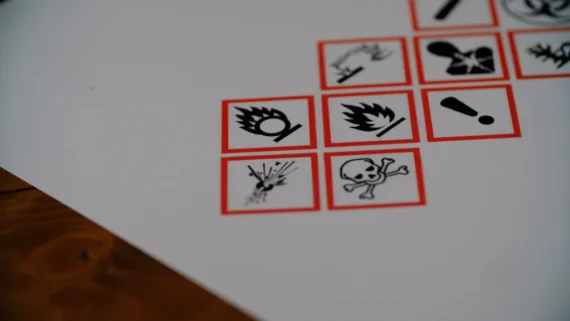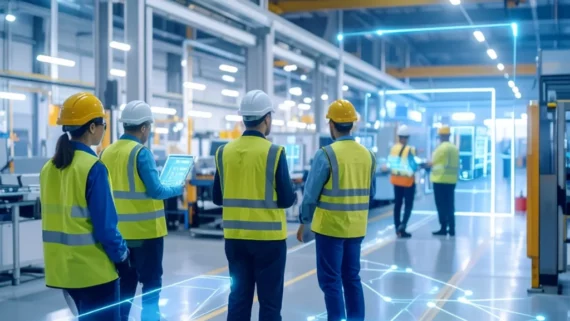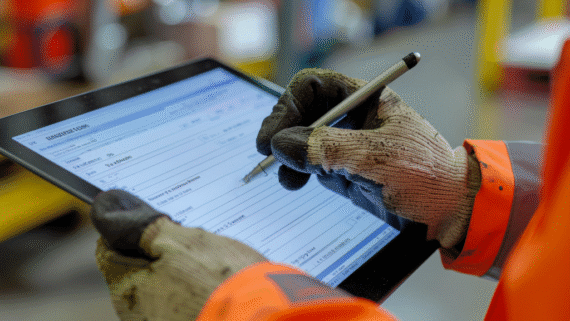
Top 5 Safety Risks in the Construction Industry
Safety Risks are High in the Construction Industry
Ask a safety expert to name the most dangerous industries, and construction will surely be on the list. Construction projects involve risks like work at height, heavy equipment, hot surfaces, high voltage wiring, and you can probably think of many other examples! Safety cannot be taken lightly when you’re in the construction business, or a major accident will happen sooner or later.
By checking the latest statistics from the AWCBC, we can confirm that construction is among the most dangerous industries:
- There were 271,806 lost time claims in Canada in 2019, and 28,111 of them were in construction. Only two business sectors had more lost time claims than construction: manufacturing (36,432) and healthcare (49,118).
- Construction tops the list when you compare fatality rates: Of the 925 fatalities reported in 2019, 204 happened in construction
.
The numbers don’t lie; safety needs to be a top priority in heavy industries like construction, and having an adequate safety program is critical if you want to keep accident rates low. Here we will discuss 5 of the top risks in construction, and how you can protect workers from them.
1) Overexertion
Few industries are more physically demanding than construction, and this means workers must be extra careful to avoid injuries. Even when accidents are avoided, construction involves a lot of repetitive tasks and the risk of overexertion is prominent. In some cases, one wrong move is enough to get you seriously injured.
Lifting heavy objects and using tools is more demanding on the body when you don’t use the right technique which means your workers need to have the best training to avoid injuries. You should also make sure they wear personal protective equipment (PPE) at all times, and keep in mind that some tasks require extra gear. For example, someone who is constantly lifting heavy objects should be provided with a support belt.
2) Being Struck by an Object
Construction materials may not seem dangerous when lying on the ground, but they can be lethal when dropped from a high place. Even objects that are dropped a short distance from the ground can cause serious injuries if they’re heavy enough. Workers need to be careful when heavy equipment or tools are used and always stay vigilant about their surroundings.
The risk of being stuck by an object is dramatically reduced when operators and the workers around them are properly trained. Operators will be aware of blind spots, and workers can stay out of the way when they know how each piece of equipment moves. You should also make sure everyone wears hard hats and safety shoes at construction sites, since you never know when an object can fall.
3) Falling from Heights
When someone mentions the risk of falling from height in construction projects, we tend to think about tall buildings. However, this risk is present everywhere; workers could step into an excavation by accident and even falling from the roof of a small home can be disastrous!
Many falls can be avoided by using guardrails and signs on exposed edges. You should make sure there is enough fall protection equipment from everyone, and train them on how to use it properly. Fall prevention equipment should also be inspected before each use, and workers must make sure all hooks and belts are properly attached.

4) Repetitive Motions
We tend to associate injuries with specific accidents, but a repetitive task can also hurt you over time. This is not only a hazard on construction sites, but also in offices and other workplaces that are not normally considered dangerous. You probably know someone who has suffered from tennis elbow or carpal tunnel syndrome.
This type of injury is more likely when repetitive tasks are not done with the right technique or posture, again, proper training and making conscious choices while you’re working can help mitigate risks. You can also split these tasks among several workers, instead of assigning them to only one person.
5) Object or Matter in Eye
Even the most organized projects have loose materials, and they can be sent flying when struck by workers or equipment. Unless you’re wearing safety goggles, these materials can get in your eye, and the severity will depend on the object. For example, sawdust may cause irritation and discomfort, but a nail gun shooting in the wrong direction is much more dangerous.
Any tasks that release material into the air should be completed carefully, and workers are less likely to cause accidents when they are properly trained. Supplying safety goggles, emergency eyewash stations, and proper training is a great place to start to keeping your employees eyes safe.
Conclusion
There are many risks in construction projects, and not all of them are glaringly evident. You need to make sure all workers are properly trained before arriving at project sites, and provided with all the equipment needed to stay safe.
Some skills are hard to find, especially when there are many construction projects in the same region. However, this should be no excuse for sending unskilled workers to projects. Even if you’re lucky and no major accidents happen, you could soon be dealing with expensive delays. Simply being aware of hazards and knowing how to avoid them makes a huge difference, but this is only possible with the proper training. Many construction accidents happen simply because workers lack safety training or aren’t prepared. Understanding these prevalent risks in the construction industry can help protect your workers from accidents and incidents.
Construction Industry-Specific Course Packages
for one low monthly price. View all the available courses in the Premium Construction Subscription below.































